On a bright spring day a 12-year-old girl called Vartoughy was cleaning her porch when she saw a bird’s nest. Reaching up with her broom handle, the young Armenian knocked it down and swept it away. A neighbour was watching and chided her. “How would you feel if someone pushed you out of your home?”
A few weeks later all of the Armenians in Everek – which was then part of the Ottoman empire – would be told they had to leave.
Around the same time in a village not so far away, Ohanes Babasoloukian’s mother was talking to her five-year-old son: “You are the most handsome, sweet and adorable boy in this whole entire village.”
Their extended family lived in the Turkish village of Kilis and grew figs and olives. “It seemed like the perfect existence,” Babasoloukian said. But his life would change abruptly.
“We heard gunshots. Then we heard screaming. Then we smelled smoke. I felt my mother squeeze me … without even a moment [for us] to think of what to do next, the soldiers kicked down the door and pulled everyone out.”
These are just two of the individual testimonies sent to the Guardian to mark the centenary of what Pope Francis has called “the first genocide of the 20th century”.
Widely accepted historical accounts say that between 1 million and 1.5 million Armenians lost their lives at the hands of Ottoman forces in what was then eastern Turkey.
Between 1915 and 1922 the Teskilat e-Mahsus (special organisation) carried out a campaign of mass murder, deportation, pillage and rape against the minority Christian Armenians.
Mass deportations: ‘Slow walkers were shot’
Many were sent on convoys, commonly described as caravans, into the Syrian desert. On Vartoughy’s journey “anyone who walked too slow was shot” and her sister was forced to give birth on a horse after soldiers refused to let them stop moving.
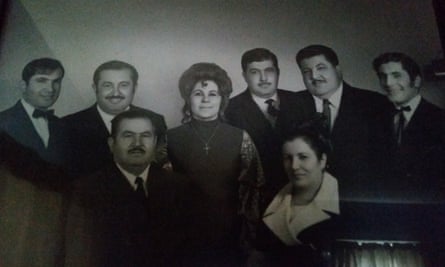
The baby’s chance of survival was slim but when Turkish villagers offered to take her, her sister refused: “This baby came into this world a Christian, and she is going to leave a Christian.”
Vartoughy and her brother were the only two members of her family to survive the 600-mile journey to Deir Ezzor in the Syrian desert, where they were abandoned. Their story was recorded by her family before she died and was sent to the Guardian by her great-grandson Jeremy Badach.
What happened next is hazy, Badach says. “Like other survivors of genocide, my great-grandma did not enjoy recounting her story.” But she and her brother would both eventually join their father in the US.
According to the memories collected by Babasoloukian’s grandson Armen Babasoloukian, by the third day of the march his mother was dead: “They left her body for the sun. Blistered and eventually dried like a prune,” he said.
On the fourth day the soldiers abandoned them, leaving him and elderly companions to find their way out of the desert alone. He talked of quickly adopting a Turkish name to avoid being identified as Armenian: “From that day on I became Ohanes Babasoloukian, the boy whose father is dead.”
‘My dreams cannot mourn. They are deferred’
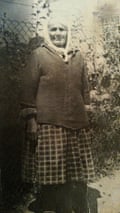
The Guardian received more than 500 responses to a callout for first-hand experiences of persecution. Some are based on transcripts and audio recordings, others are stories recited through the generations.
While it is impossible to independently verify every detail, the stories contribute to an overwhelming narrative of death, loss and destruction.
It was night-time in Dalvor when 12-year-old Beso Gasparian’s family were warned of the proximity of Ottoman soldiers. She fled with her mother and her eight-year-old brother, Manuk, to a hill above the village to hide their valuables and wait for the rest of their family to join them.
But as dawn came a massacre erupted. They watched as the soldiers beheaded her father and stabbed her two-year-old nephew before turning on the boy’s mother, Kveh. She was seven months’ pregnant.
The three of them returned to the village the following night to bury the dead. “The scene was hellish. We put the killed baby on my sister’s chest and covered them with stones. But we couldn’t find my father’s corpse,” wrote Lusya Araqelyan, recounting the story told to her by her grandmother.
Many ancestors we heard from described the stoical sadness carried by survivors for the rest of their lives. When asked about his mother, Babasoloukian said: “My dreams cannot mourn her. They are deferred. I did not have enough energy to mourn her.”
Gasparian said she didn’t shed a tear when her family were slaughtered. Years, later, when asked why, she said: “Have you ever seen a stone crying?”

Melissa Selverian shared a picture of the Ghazikian family – three sons, Garabed, Vartan and Avedis, and three daughters, Eliza, Nevart and Meline – who lived a prosperous and happy life in Erzerum, known to Armenians as Garin.
As the deportation began, two of sons and their father were separated and murdered (one had previously left for the US), their homes and property were seized, and the girls and their mother, Hripsime, were sent on a “death march” through the desert. They survived, eventually making it to the US.
Hripsime wore black every day for the rest of her life. Her story was filmed by Selverian, her great-granddaughter, in 1988 as part of a documentary project.
Living histories
There is added impetus now to document stories . As with the Holocaust of Nazi Germany, living survivors are dying out. The campaign group 100 Lives says there are just 33 left in Armenia.
Some still live in diaspora pockets around the world. Lalai Manjikian sent us the “living histories” of three women residing in care homes near each other in Montreal: Keghetzik Hagopian-Zourikian, who is 104; Knar Bohjelian-Yeminidjian, 106; and Armenouhie Tenkerian-Piliguian, 101.
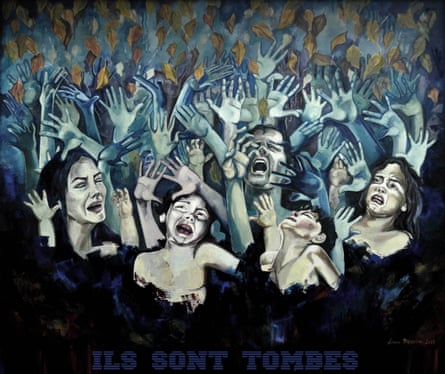
Hagopian-Zourikian was separated from her family and lived as an orphaned refugee in Greece and Egypt. Years later she was reunited with her mother. Bohjelian-Yeminidjian credits her family’s survival to (reluctantly) adopting a Turkish identity. And Tenkerian-Piliguian, who moved to Montreal in 1963, talked of remaining dedicated to Armenian poetry and literature while living abroad.
Collective mourning
A reader who gave his name as Ruben told us: “There is almost no Armenian family in the world without a story about 1915.” A number of Armenian-led campaigns have made a concerted effort to collate them this year.
Birthrights Armenia says it wants younger members of the Armenian community “to experience their homeland”. The programme coordinator, Shant Meguerditchian, says chronicling painful stories can give people a sense of where they come from: collective mourning to come to terms with history.
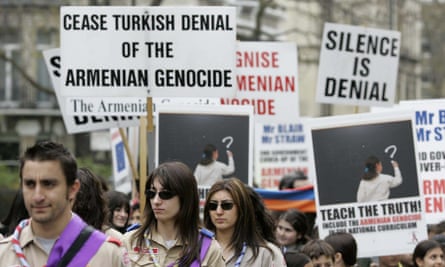
Diaspora groups have long campaigned for global recognition of the term genocide. Turkey’s failure to recognise it was likened by the pope to “allowing a wound to keep bleeding without bandaging it”. On Wednesday, President Barack Obama disappointed US-based campaigners by stopping short of giving his official support.
Living survivor: ‘I would like another childhood’
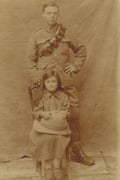
Araxie Altounian’s grandmother Sirvard Kurdian lives in Toronto. She was born three years before the forced deportations began, when she was forced with her siblings and grandfather to walk from Erzerum in eastern Turkey to Mosul in Iraq. The journey took six months.
The family lived in Mosul for four years, carving out a small living by making clothes with a sewing machine, which Kurdian still owns today. From Mosul she moved to Aleppo, in Syria, and met her husband, Khachig Kurdian, an orphan from the same town who had lost his entire family.
Last year, on her 102nd birthday, Kurdian received a visit from her local parish priest. He asked what she’d wish for if she were to live life again. She replied: “I would like to have a childhood. I never had one.”
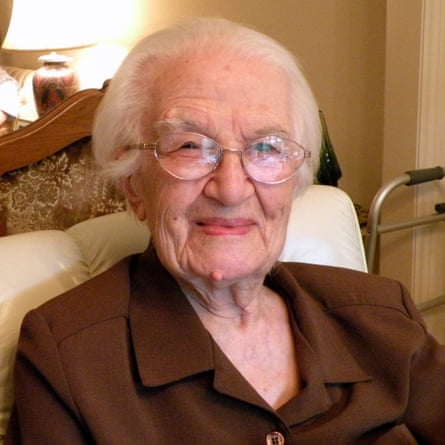
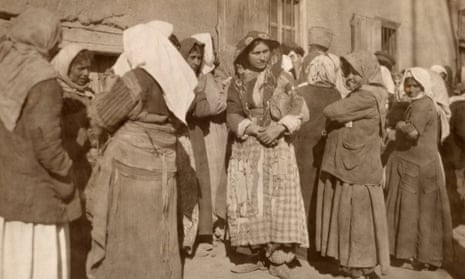
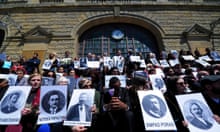


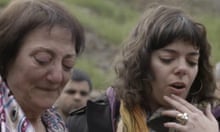

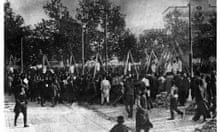

Comments (…)
Sign in or create your Guardian account to join the discussion